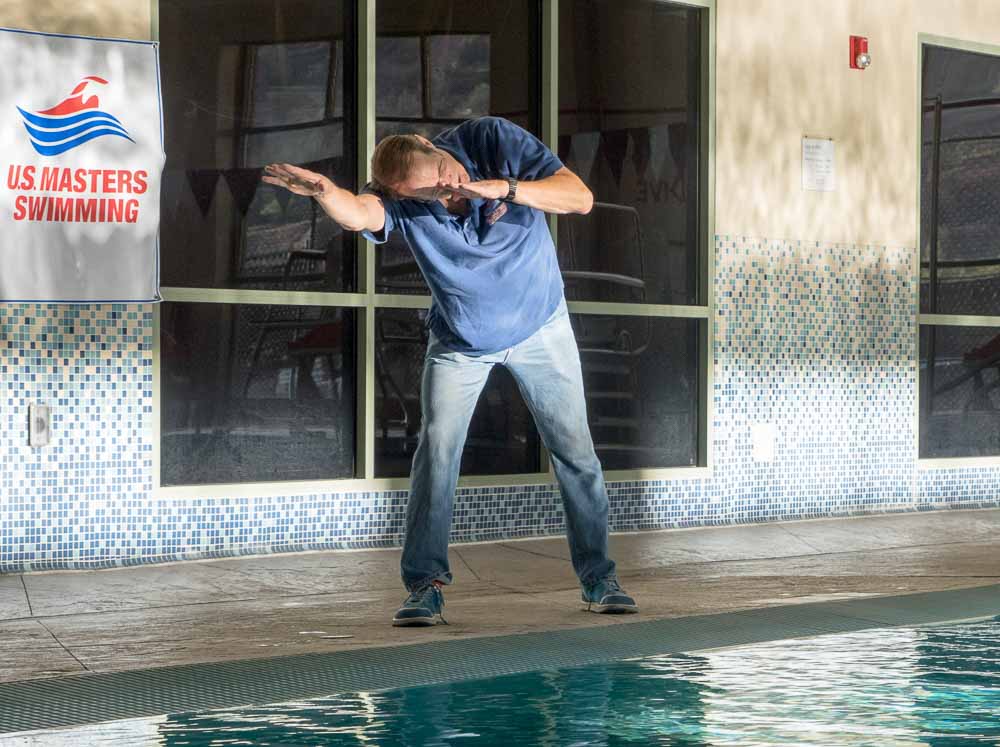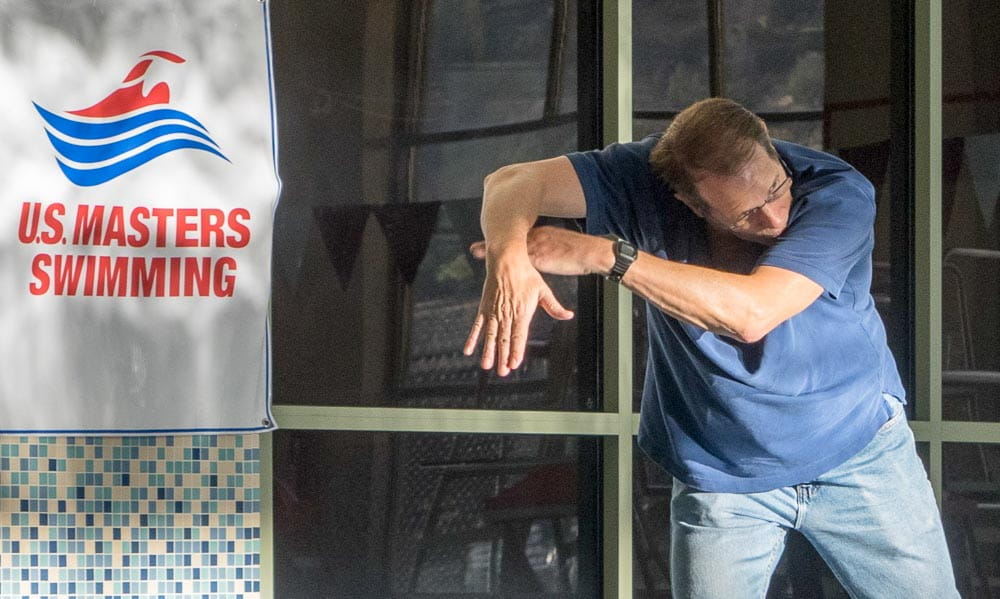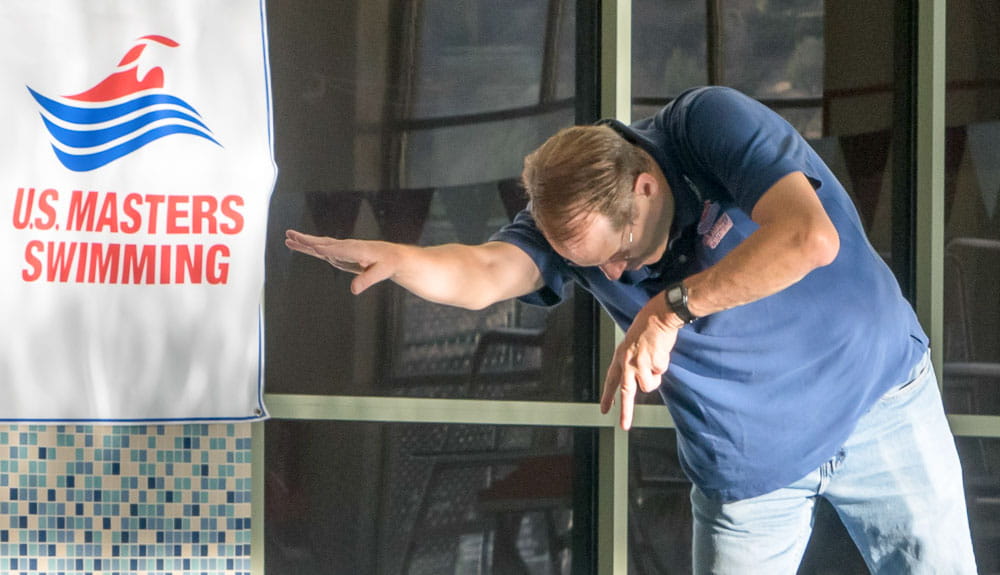How to Communicate With Your Swimmer in the Water
Channel your inner mime for continuous coaching
There’s more to shaping results than simply writing workout sets. Of the many duties involved in Masters coaching, the most often neglected is paying attention during the set. Watch what the swimmers are doing so you know what common technique flaws need to be fixed with future drills. At the same time, give visual feedback to the swimmers during the set for real-time corrections.
Here are a few suggestions for on-deck gestures to help mid-set swimmers focus on the fine points of proper technique. Remember that you are connecting to each swimmer as an individual, so look them in the eye as you give your signals.
One-goggle breathing
Place one hand in front of your nose to indicate where the water line should fall during freestyle breathing.
Vertical forearm

In addition to miming the behavior you want, you can also point to or touch the critical part of the gesture (in this case, the forearm) to ensure the message is clear.
Eyes down

When describing technique targets, use gestures as you explain the concept. For example, when you say to look down, duck your head and point from your eyes to the floor. Then when you repeat that gesture during the set, the swimmer will understand its meaning.
Hold that pace

As it also communicates “You’re doing well!”, the OK symbol is important for maintaining morale and commitment to a pace during a challenging swim.
Final Thought
The key to getting effective results from on-deck gestures is to frequently repeat your descriptions of proper technique when you explain the sets. Make your key terms a common part of your stroke description vocabulary so that your mid-set motions become instant reminders of concepts the swimmers already know. Instead of seeing you and wondering “What is he doing?”, they should immediately think “Oh yeah, I need to get my forearm vertical!” Every moment on the deck is an opportunity to communicate ways to help swimmers improve.
Categories:
- Coaches Only
SIGN UP FOR UPDATES FROM USMS















